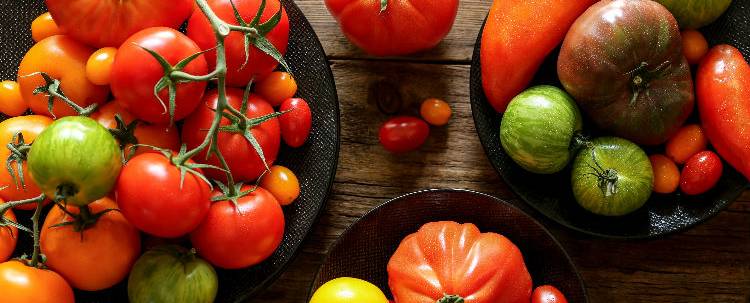How many types of pasta do you know?
The most common type of pasta

Although the use of pasta in our country was until a few years ago basically limited to macaroni, spaghetti and cannelloni, there are actually hundreds of different varieties of this food, which are now becoming increasingly present in our homes. Many of these varieties are already familiar to us and we will have eaten them even if we do not remember their names, such as Fussilli or Farfalle, while others are still complete strangers.
So that the next time we go to an Italian restaurant and know how to distinguish rigatoni from linguine and that our home-cooked dishes are little more interesting, we'll now take a look at the some of the best pastas currently available.
Dry and fresh pastas
Dry pasta is the most commonly found in our pantries, which can be kept for months without spoiling, while fresh pasta should be kept in the fridge and consumed within a short period of time. The ingredients are the same, water and flour, which are then combined with durum wheat semolina or egg. Some dishes are improved a great deal when fresh pasta is used, while for others the use of dry pasta makes more sense.
One pasta for each sauce
• Smooth: No striations, curls or holes, the most suitable for light sauces.
• Crosshatch: Recommended for denser sauces, as the striations allow the sauce to adhere better.
• Perforated or tubular: great for sauces that incorporate large pieces of some other ingredient, such as vegetables.
Fresh pasta should be kept in the fridge and consumed within a short period of time
Does size matter?
Another criterion for distinguishing them is their size (short or long) and whether or not they are stuffed. Some experts claim that there are more than 350 different types of pasta, here are some of the main ones:
Short pasta | |
| Macaroni Narrow, slightly curved or straight tubes. | Rigatoni Tubular paste with parallel striations, slightlycurved, 3.5 cm long. Very good with meat sauces. |
| Tortiglioni Tubular pasta with slightly coiled striations. | Penne (feathers) Short tube shape, with stripes on its outer face. |
| Gnocchi Mashed potato and flour pasta, with an oval shape. | Fusilli Helix or bow tie shape Ideal for summer salads. |
| Farfalle Butterfly-shaped with serrated edges. | Ruote Wheel-shaped. Children love it and it can be accompanied by vegetables, legumes or cheese au gratin. |
| Sharks With a tubular and semicircular shape. Perfect for soups. | Maravilla Pasta in the form of small grains of rice, mostly usedin consommés. |
| Angel hair or noodles This is the short version of spaghetti. They tend to be of the same thickness or even finer. | |
Long pasta | |
| Spaghetti Elongated and round in shape. It's the pasta we'remost familiar with. | Tagliatelle (noodles) Similar to spaghetti but with a rectangular or flatcross-section. |
| Pappardelle Flat strips up to 2.5 cm wide. | Fettuccine Elongated, flat pasta, 6 mm wide. This is the Romanversion of tagliatelle. |
| Cannelloni Small rectangular sheets that can be stuffed with meator vegetables and mixed with sauce. | Lasagna Rectangular or square sheets with serrated edges. Similar to cannelloni but prepared in layers. |
Stuffed pasta | |
| Ravioli Shaped square package They are mainly stuffed withmeat, spinach or cheese. | Tortellini With a knotted roll shape. They are also usuallystuffed with meat, parmesan cheese or other ingredients. |
| Panzerotti A type of plain pasta in the form of half-moon. | Cappelletti A stuffed pasta in the form of a small hat. |
| Agnolotti A ravioli with rounded edges. | |

A guide to which tomato is best for each dish
What do you think about?
Share comments, opinions and tricks with the Community







